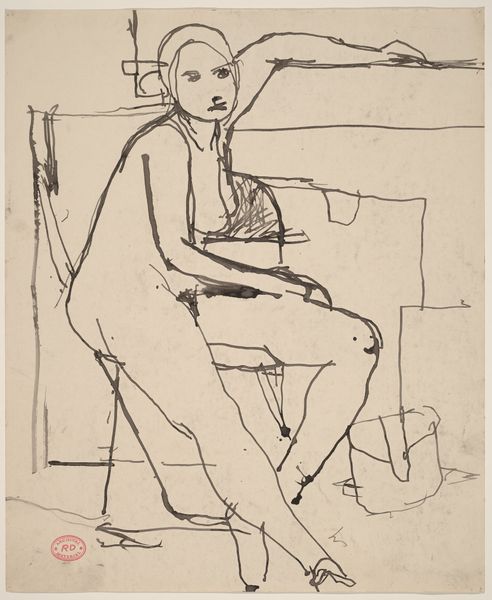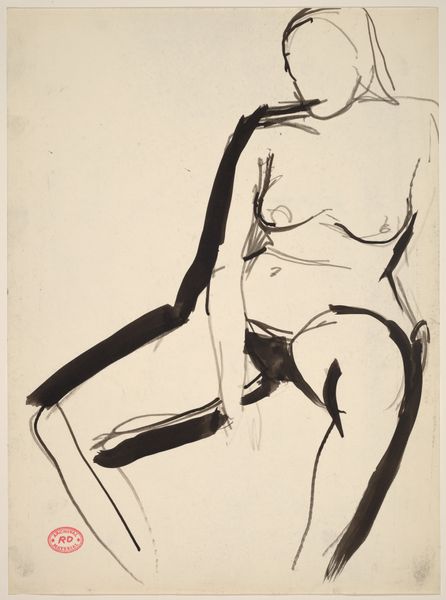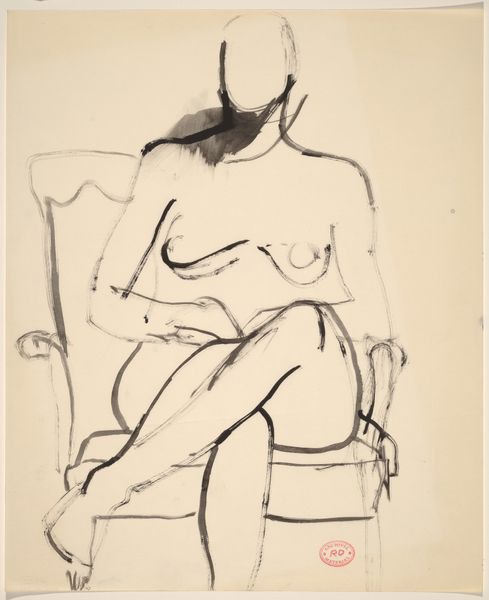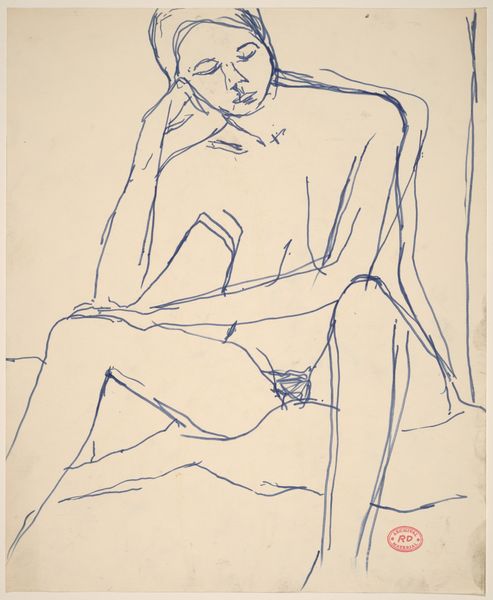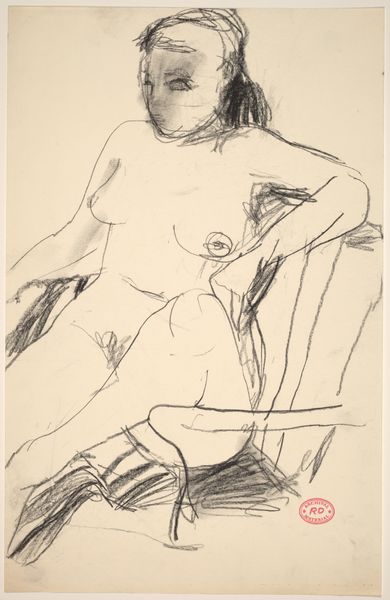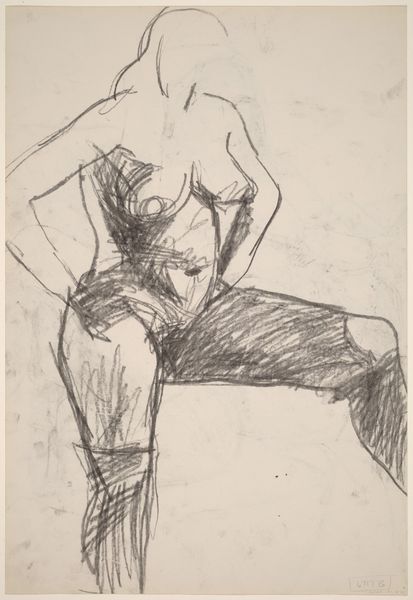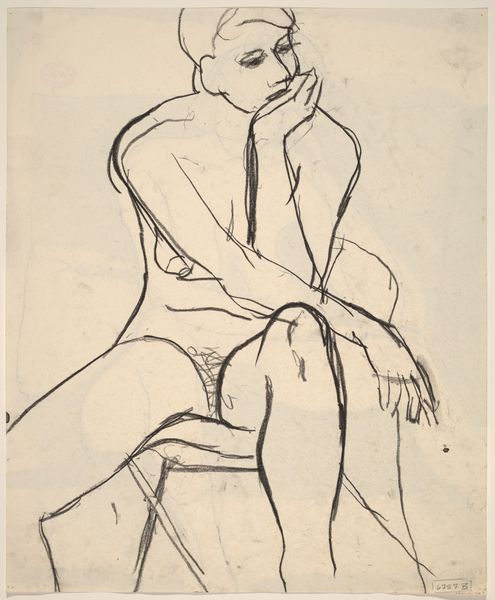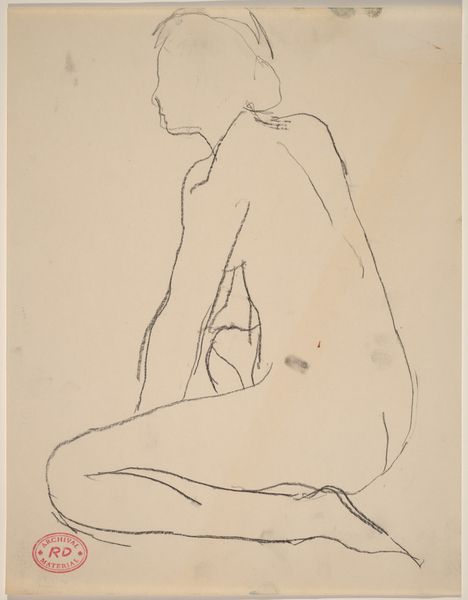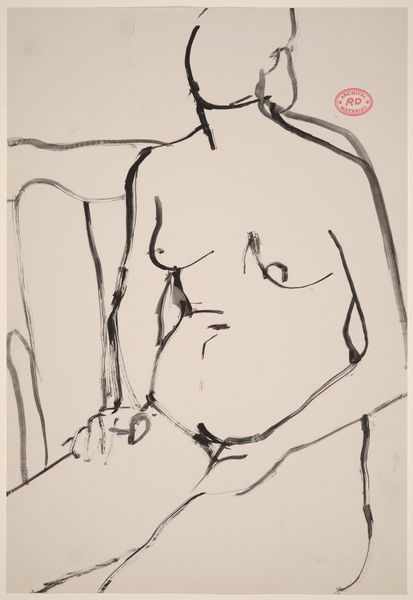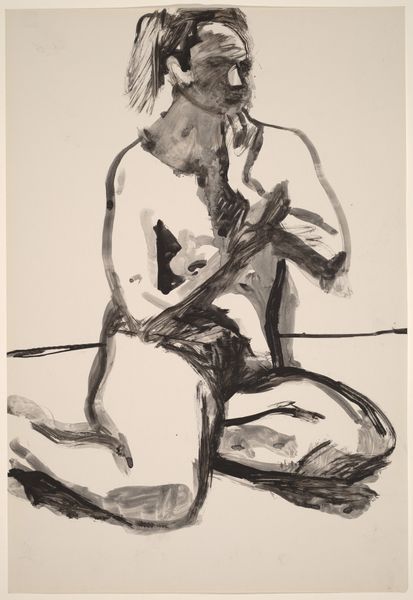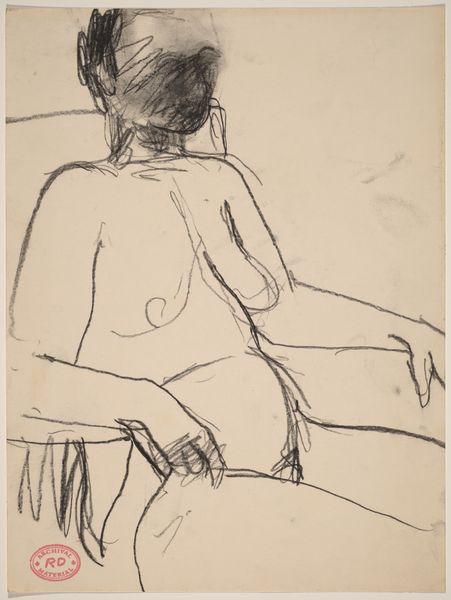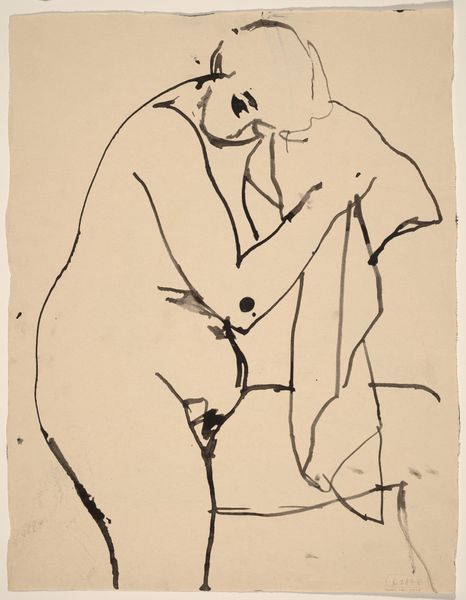![Untitled [seated figure with bare shoulder] [verso] by Richard Diebenkorn](/_next/image?url=https%3A%2F%2Fd2w8kbdekdi1gv.cloudfront.net%2FeyJidWNrZXQiOiAiYXJ0ZXJhLWltYWdlcy1idWNrZXQiLCAia2V5IjogImFydHdvcmtzLzc3NTdkNmUxLTIxMzUtNGJhMC05Y2YyLThiNTg5MmNlYjQxYS83NzU3ZDZlMS0yMTM1LTRiYTAtOWNmMi04YjU4OTJjZWI0MWFfZnVsbC5qcGciLCAiZWRpdHMiOiB7InJlc2l6ZSI6IHsid2lkdGgiOiAxOTIwLCAiaGVpZ2h0IjogMTkyMCwgImZpdCI6ICJpbnNpZGUifX19&w=3840&q=75)
Untitled [seated figure with bare shoulder] [verso] 1955 - 1967
0:00
0:00
drawing, ink
#
portrait
#
drawing
#
ink drawing
#
pen sketch
#
figuration
#
bay-area-figurative-movement
#
ink
#
line
#
portrait drawing
Dimensions: overall: 43.2 x 31.8 cm (17 x 12 1/2 in.)
Copyright: National Gallery of Art: CC0 1.0
Editor: So, here we have Richard Diebenkorn’s "Untitled [seated figure with bare shoulder]" from sometime between 1955 and 1967, an ink drawing. The bold lines create a figure that feels both present and incomplete, almost like a memory surfacing. What do you see in this piece, particularly considering the artist's choice of such stark lines? Curator: The very starkness you observe is what draws me in. It's as if Diebenkorn is not just depicting a figure, but a moment of being. The broad, unwavering strokes of ink articulate the cultural memory of modernist form while capturing raw human presence. These bold lines aren't just outlines; they’re boundaries and definitions of self, echoing through historical and psychological contexts. Does the gaze meet your own? Editor: Not really, the figure looks like it's lost in thought. The heavy lines around the figure make me feel uneasy; there's something very vulnerable and private being displayed. I wonder, is there a symbolic element related to his abstraction style? Curator: Exactly. The obscuring of specific detail with these strokes lends an ambiguity which enables the viewer to project onto the image. Consider the simplification of form and what that may say about memory itself – are memories crystal clear, or abstracted fragments pieced together? It isn't necessarily about depicting this specific figure, but invoking a universal sense of contemplation. What elements feel most present to you? Editor: I’d say the shoulders and the knees; those lines feel definite. I see what you mean about projecting a universal state, now. It’s deceptively simple but deeply affecting. Curator: Indeed. Diebenkorn captures a raw state of being with a sensitive distillation of form, using the symbol of the body to resonate within the cultural consciousness. Each time one views this image, the dialogue with these elemental marks shifts, much like memory itself.
Comments
No comments
Be the first to comment and join the conversation on the ultimate creative platform.
